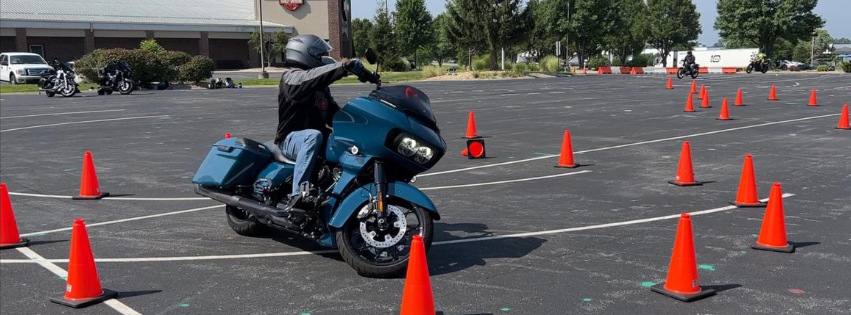
Ultimate Bike Bonding RiderCourse
This course is conducted on your motorcycle.
For rental motorcycle information call 463-269-9959.
General Information:
The MSF Ultimate Bike Bonding RiderCourse (UBBRC) is typically a 5-hour course for experienced riders, modeled after police training courses.
There is no formal classroom, and the riding exercises focus on limited-space maneuvers modeled after police training courses. Through progressively challenging exercises, you develop smooth and precise control and learn more about the limits of your abilities and your bike’s capability. You must bring a valid motorcycle permit/endorsement and an insured/registered/street-legal motorcycle.
The overall aim of the UBBRC is to help riders develop smooth and precise control as riders manipulate primary motorcycle controls and develop their riding procedures and techniques. Good bike bonding helps a rider automate physical skills so they can devote more attention to road and traffic conditions (searching and evaluating). It helps a rider to be a better decision-maker. A primary value of having good bike bonding is how it transfers to actual on-street riding in the form of smooth control inputs and more spare “mental capacity” with which to strategize (use SEE).
What To Expect:
The UBBRC consists of 9 riding exercises; the following are examples of some of the exercises you’ll ride:
ZIGZAG: The exercise uses a similar path of travel as Basic Bike Bonding RiderCourse, but stop points are added for stopping in a straight line and stopping in a turn.
CIRCLE WEAVES: This exercise uses three circles with differing radii. Riders choose a circle and ride it clockwise or counter-clockwise through a weave. The challenge increases as riders gain confidence in riding the smaller circle.
SWITCHBACKS: The Switchbacks challenge a rider’s low-speed maneuvering skill and help them bond with their motorcycle. “Snap Steering” is introduced as quickly turning the handlebars to a point at or near the steering lock limit. The path is referred to as a teardrop to help negotiate the exercise.
LOLLIPOPS: An exciting yet challenging exercise consisting of a circuit of slaloms and circles of progressively decreasing sizes.
CIRCUIT TRAINING: This exercise is a capstone for bike bonding at low speed. There are four separate stations: a T-intersection followed by a Figure 8 and another T-intersection followed by a Bowtie. This may be the coolest of the exercises!
SHARING THE ROAD: This exercise is a continuous path of travel that reinforces the social aspect of sharing the road, gap selection, and leaving space for others. It allows riders to focus on continuous improvement in the application of skills and knowledge to manage risks.
